Do you feel overwhelmed, standing in your cluttered kitchen? Are there too many gadgets and gizmos? Finding a baking sheet or sorting utensils is a daily struggle?
But what if there’s a better way? A kitchen that looks great and works well. One where cooking is fun, not a chore.
Minimalist kitchens are all the rage. They’ve become a favorite among homeowners and design fans. By focusing on simplicity, clarity, and function, you can make your kitchen beautiful and functional.
In this guide, we’ll dive into creating a minimalist kitchen. We’ll cover the basics and share practical tips. Say goodbye to clutter and hello to a kitchen that shows off your style and supports your cooking.
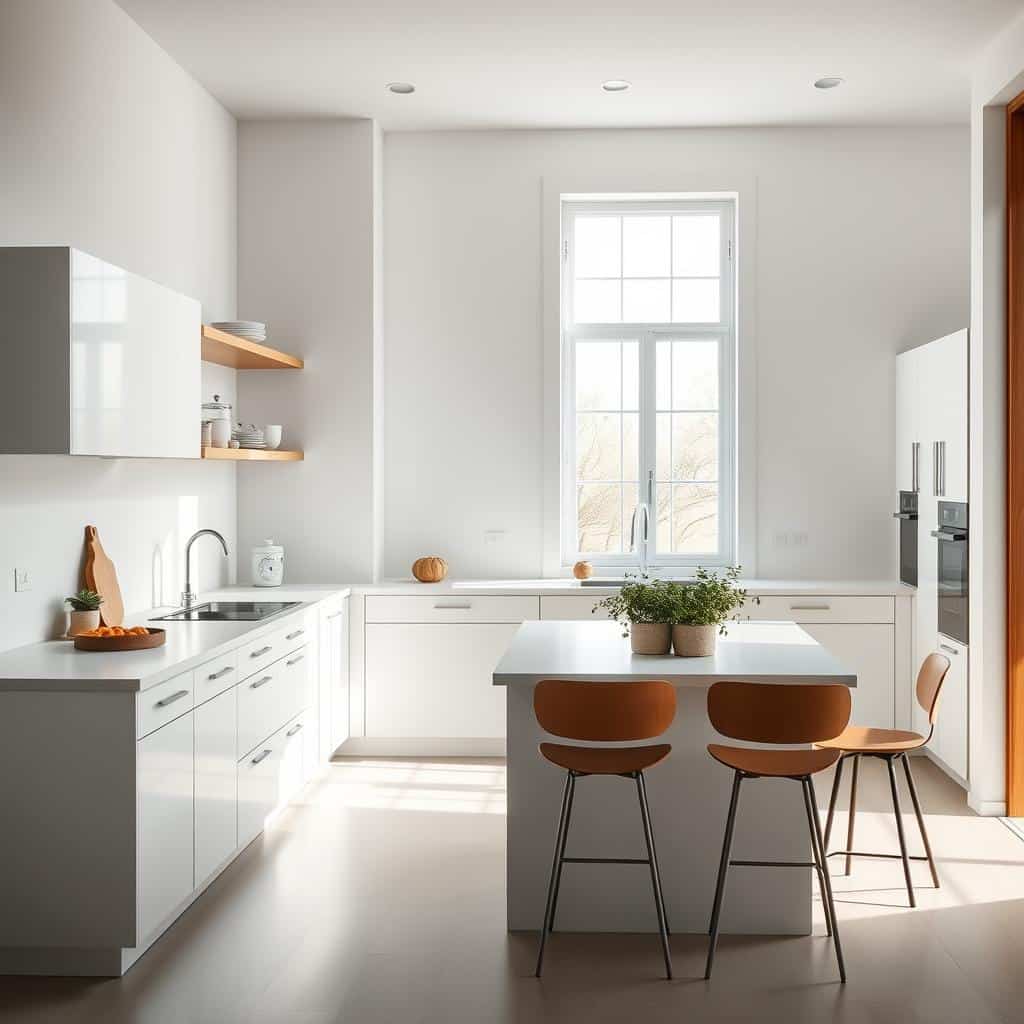
What is a Minimalist Kitchen?
A minimalist kitchen is all about simplicity, function, and keeping things organized. It means having a clean countertop, smart storage, and knowing what’s really needed. By following these minimalist kitchen principles, your kitchen will look great and work better.
Understanding the Minimalist Approach
The minimalist kitchen definition is about choosing what’s truly important. It’s about keeping only what you use often and getting rid of the rest. This makes your kitchen a peaceful place where you can focus on cooking.
Benefits of a Clutter-Free Kitchen
Having a minimalist kitchen brings many advantages. It makes your kitchen less stressful and more efficient. Plus, it looks better, creating a calm and balanced look.
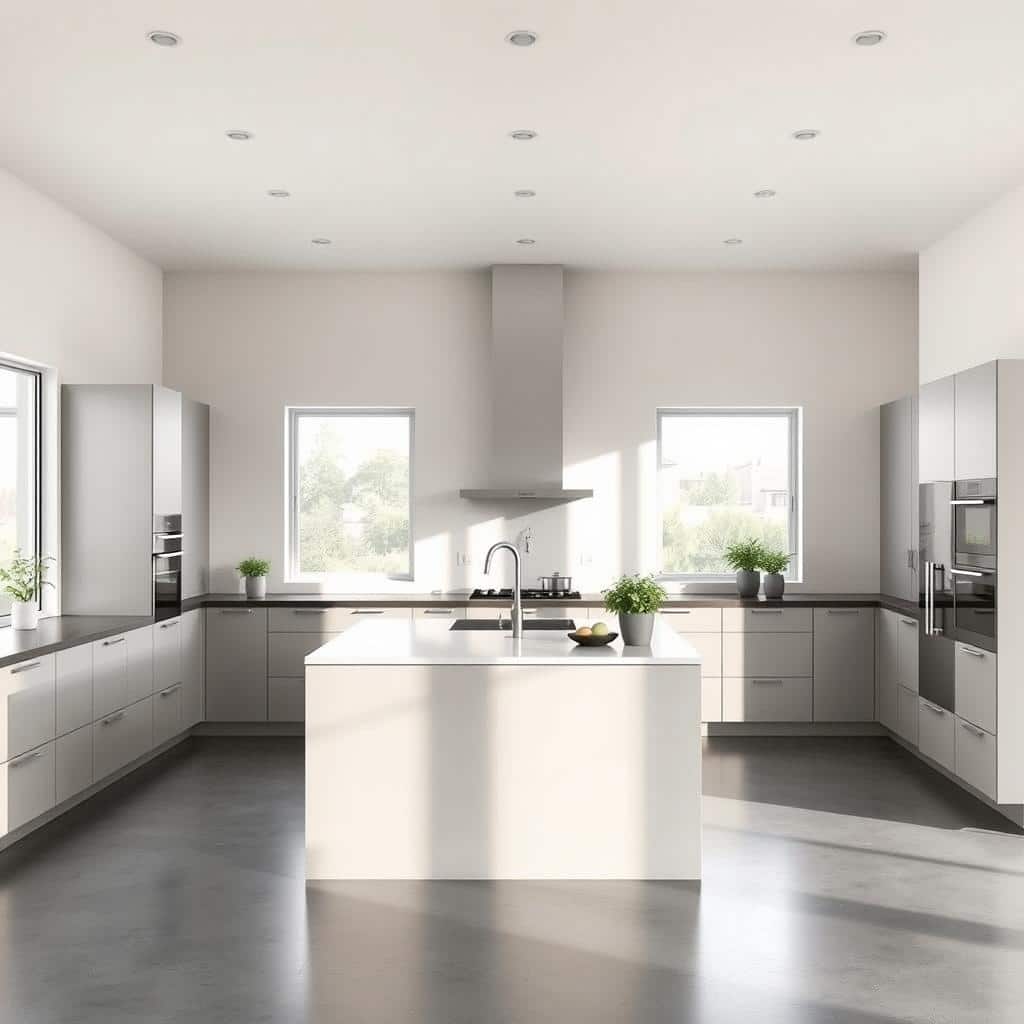
Principle #1: Simplicity
A minimalist kitchen is all about simplicity. It means focusing on what you really need for cooking and baking. This way, you avoid buying too many gadgets and appliances.
By keeping things simple, your kitchen becomes both useful and nice to look at. It’s free from the mess that often fills other kitchens.
Stay in Your Lane
Understanding your cooking habits is key to a simple kitchen. Don’t buy every new tool or appliance that comes out. Stick to what you really use and need.
This approach makes your kitchen more organized. It also saves you money and helps the environment by reducing waste.
Consolidate Redundant Items
Another step is to get rid of items you don’t need. Do you have too many blenders, whisks, or spatulas? Look at your kitchen and find ways to simplify.
By choosing a few, high-quality items, you save space. Your kitchen will look better and be more organized. This follows the simple kitchen idea.
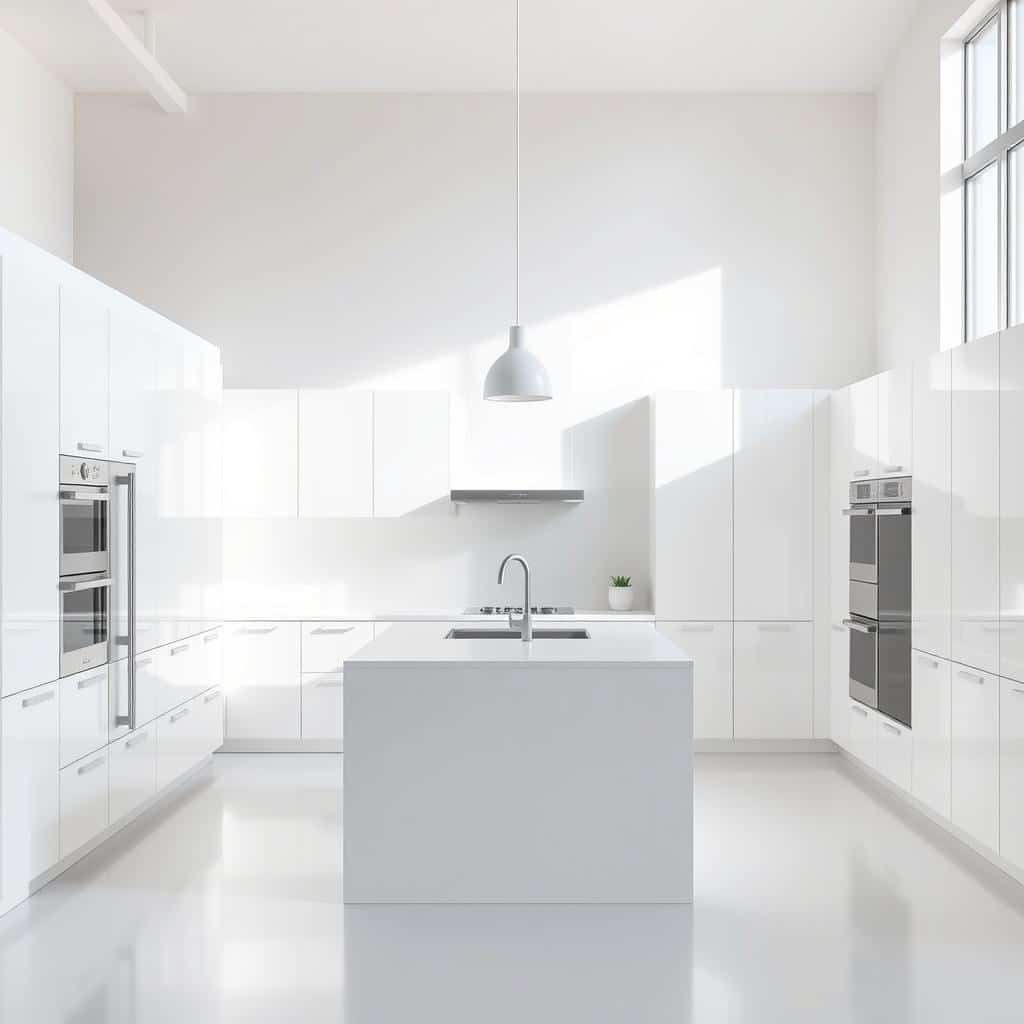
The goal of a simple kitchen isn’t to limit your cooking tools. It’s about being smart with what you buy. Choose items that are useful, not just because they’re new.
This way, you create a kitchen that supports your cooking. It’s a place that’s free from clutter and looks great.
Principle #2: Clear Counters
Creating a minimalist kitchen is more than just having fewer things. It’s about using your space wisely, keeping counters clear and clutter-free. This is where the “convenience fallacy” comes into play.
It’s easy to leave often-used items on counters for quick access. But, this can make your kitchen look cluttered and stressful. Storing these items in cabinets and drawers actually makes them easier to find, giving you a clean space to cook.
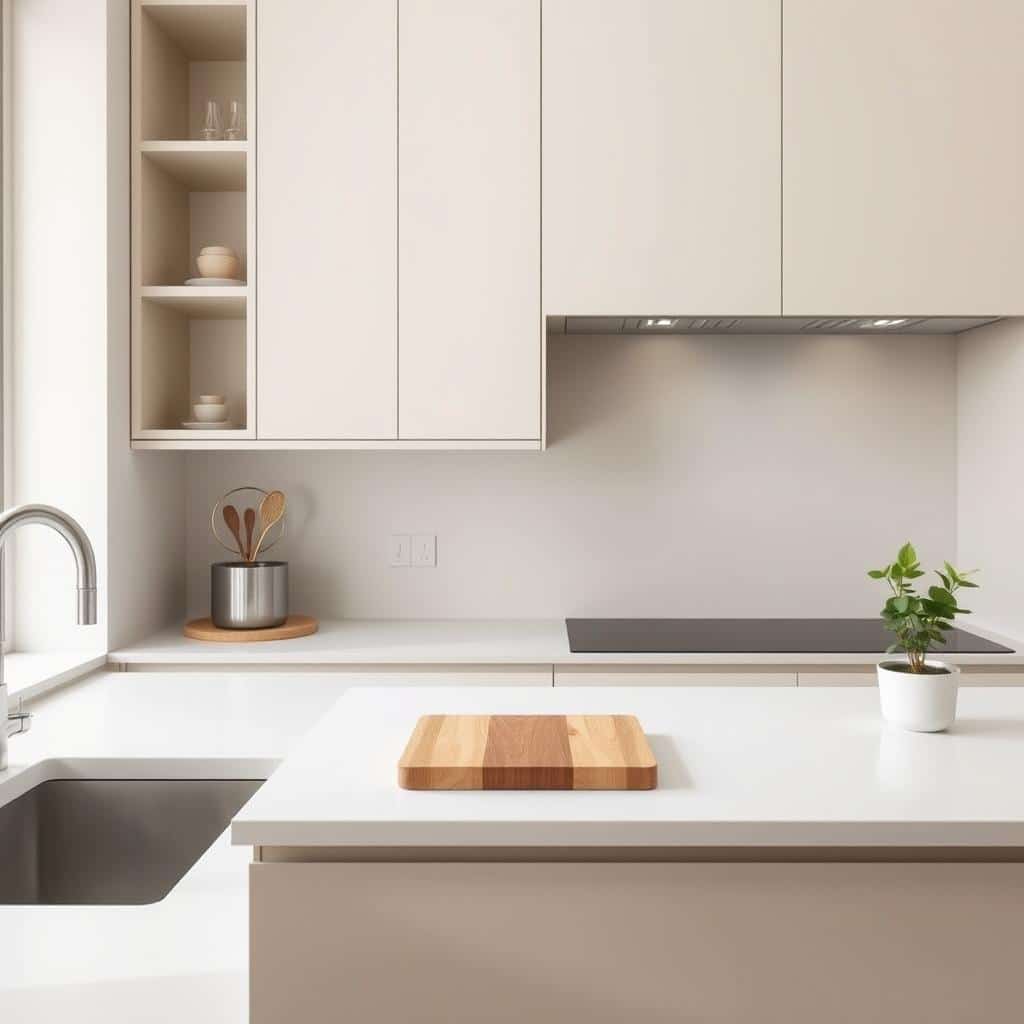
Following the “Clear Counters” principle can change your daily life. It makes your kitchen peaceful and organized, spreading calm to your whole home. The kitchen is often the home’s center, and a tidy space sets the right mood.
To keep counters clear, be careful about what you keep in your kitchen. Check your needs often and only keep essentials within reach. By decluttering, you’ll have a kitchen that’s both functional and beautiful, fitting your minimalist way of life.
Principle #3: Boundary Lines
Creating a minimalist kitchen means setting clear boundaries. See your cabinets, drawers, and pantry as limits for storage. Don’t try to fit more than they can hold. Make the most of what you have.
Respecting your minimalist kitchen storage helps keep things organized. This stops clutter from building up in crowded cabinets. Use kitchen organization strategies that make your space neat and easy to use.
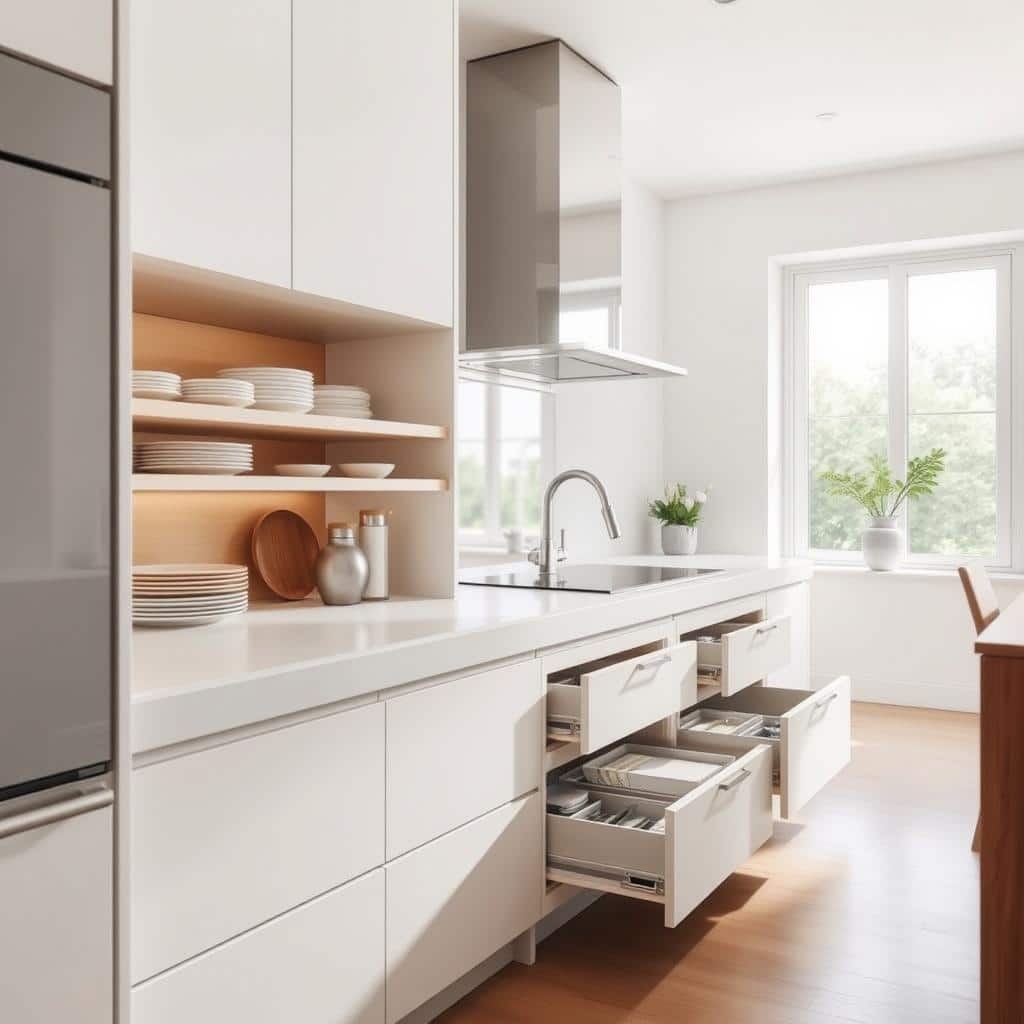
Decluttering kitchen cabinets is a continuous task. Check your kitchen items often. Ask if they’re useful or bring you happiness. Getting rid of things you don’t need makes your kitchen better and more functional.
Minimalist Kitchen Organization
Creating a minimalist kitchen is more than just cutting down on stuff. It’s about finding smart ways to store your must-haves. This way, you keep them handy while getting rid of clutter. The goal is to find a balance between being useful and simple.
Cabinet and Drawer Storage
First, figure out what kitchen items you use every day. Get rid of things you don’t need or use often. Then, group similar items together for easy reach.
Use vertical space with stackable containers, lazy susans, and tiered shelves. This helps make the most of your cabinets. Set aside specific drawers or shelves for things like baking supplies, cooking tools, and dishes.
Essentials vs. Extras
In a minimalist kitchen, it’s key to know the difference between minimalist kitchen essentials and extras that add clutter. Keep your go-to items like pots, pans, knives, cutting boards, and basic spices within reach. Store less-used gadgets and special items away to keep your counters and cabinets tidy.
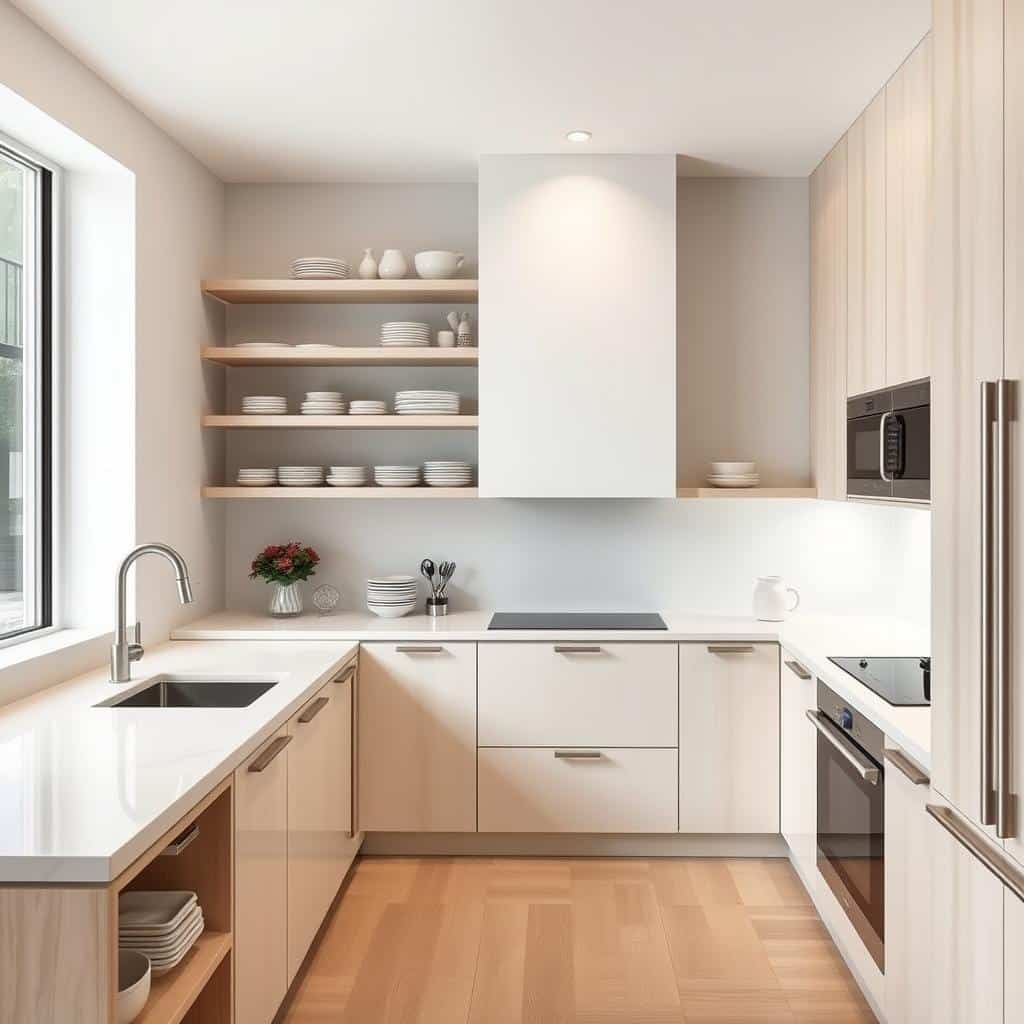
By focusing on minimalist kitchen organization and kitchen organization ideas that are simple, you can make your kitchen a peaceful, functional space. It will bring you joy every time you enter.
Minimalist Kitchen
We dive into the world of minimalist kitchen design, showing how clean spaces can be both beautiful and useful. A Scandinavian home with white-oak cabinets and a modern galley kitchen with Calacatta Gold marble are great examples. These kitchens prove that less can mean more in terms of style and function.
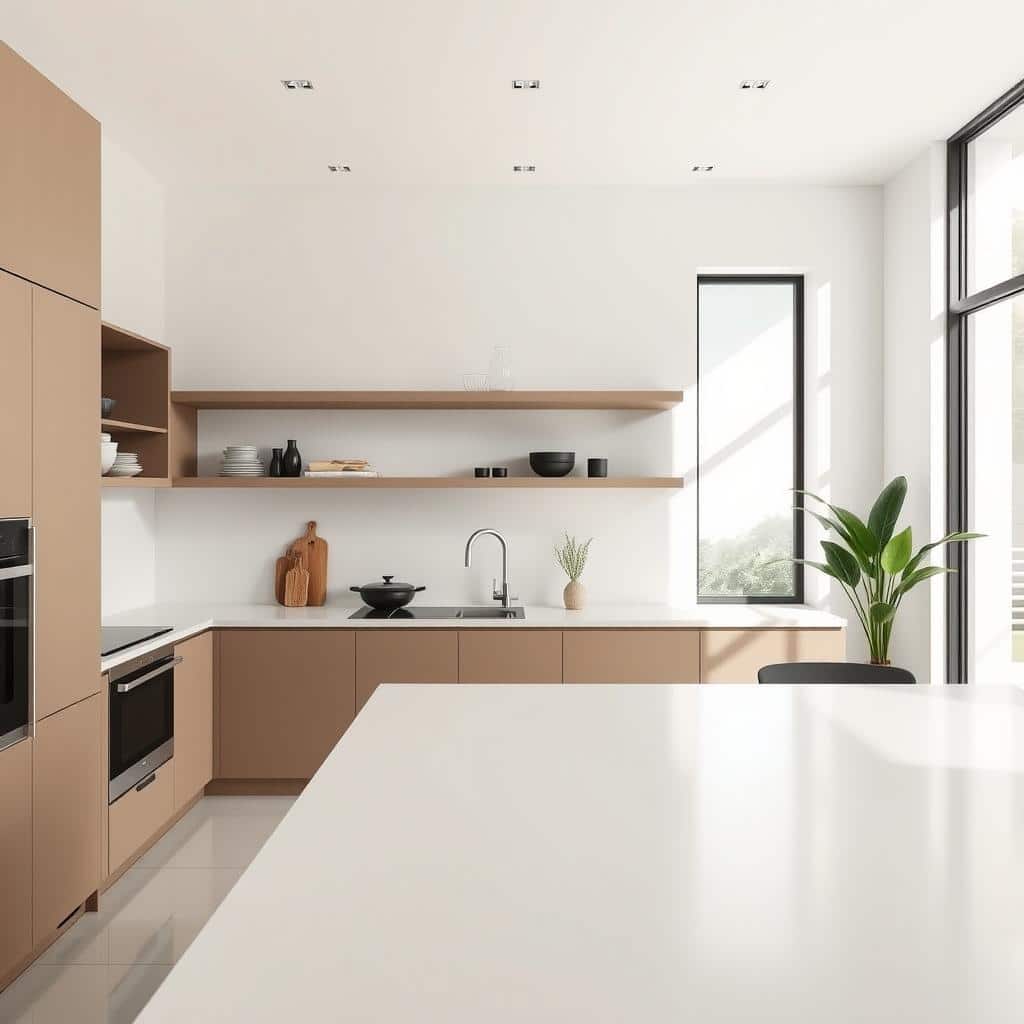
Decluttering Your Kitchen
Turning your kitchen into a minimalist oasis begins with decluttering. By following a step-by-step guide, you can clear out unnecessary items. This makes your kitchen a place of creativity and efficiency.
Step-by-Step Decluttering Process
Start by clearing your countertops. Remove items that don’t have a purpose. This includes appliances, utensils, and decor that you hardly use. A clutter-free kitchen is easier to clean and safer for food prep.
Then, sort through your cabinets and drawers. Ask yourself if you really need each item. Get rid of duplicates and donate or recycle what you don’t need. An organized kitchen makes cooking faster and more enjoyable.
Don’t overlook your pantry and fridge. Get rid of expired or stale food. This cuts down on waste and makes meal planning easier. A clutter-free kitchen is peaceful and inspires creativity in cooking.
By following a minimalist decluttering process, you’ll enjoy a more organized kitchen. Embrace the freedom of a clutter-free space and start your journey to mindful cooking.
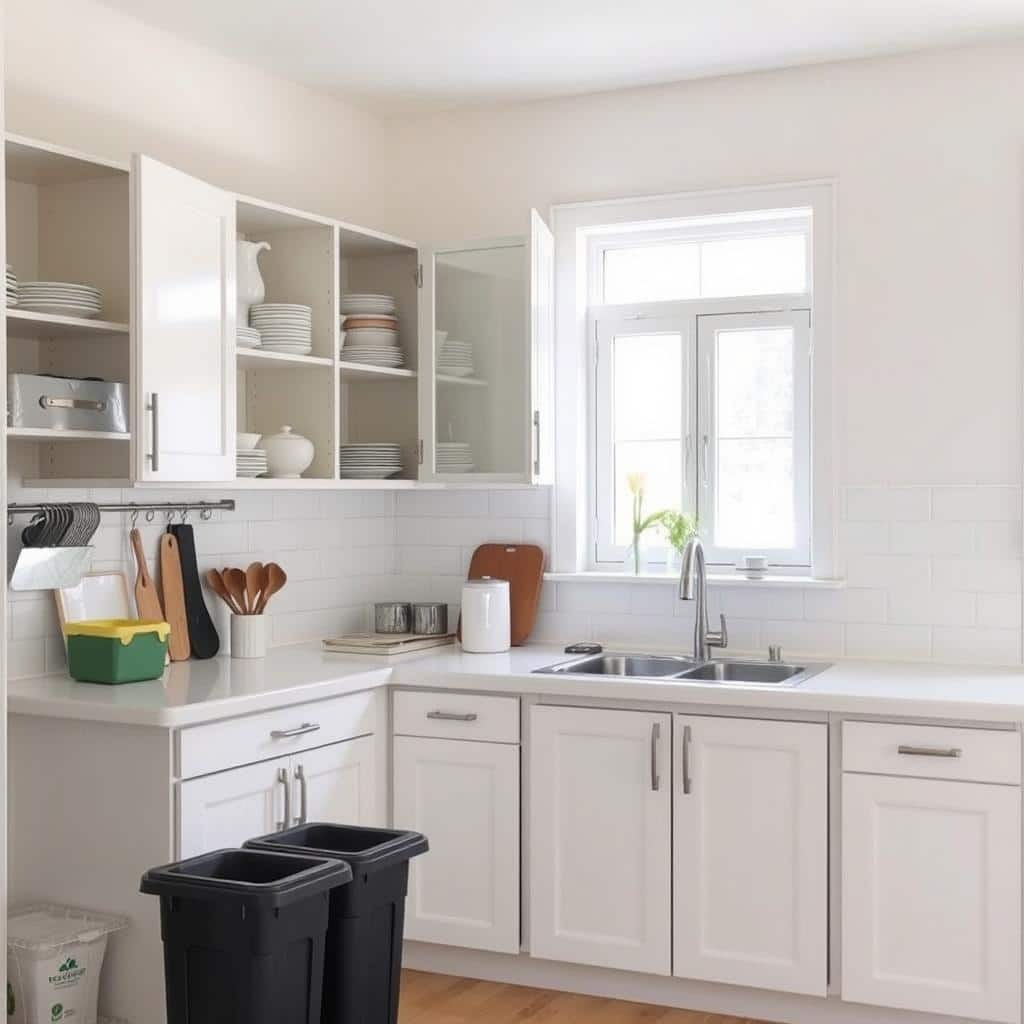
Maintaining a Minimalist Kitchen
Keeping a minimalist kitchen is a journey. With the right habits and routines, you can keep it clutter-free and functional. The secret is to make everyone help out, so everyone feels responsible for the kitchen’s look.
Assign Daily Tasks
Begin by setting up a clear plan for daily kitchen care. Give tasks like cleaning up near the sink, washing dishes, and keeping things tidy. These tasks, done every day, help keep the kitchen clean and prevent clutter.
Get your family involved in these tasks. Make them own their part in keeping the minimalist kitchen clean. Encourage them to follow kitchen cleaning routines and minimalist kitchen habits that match your goal of a clean kitchen.
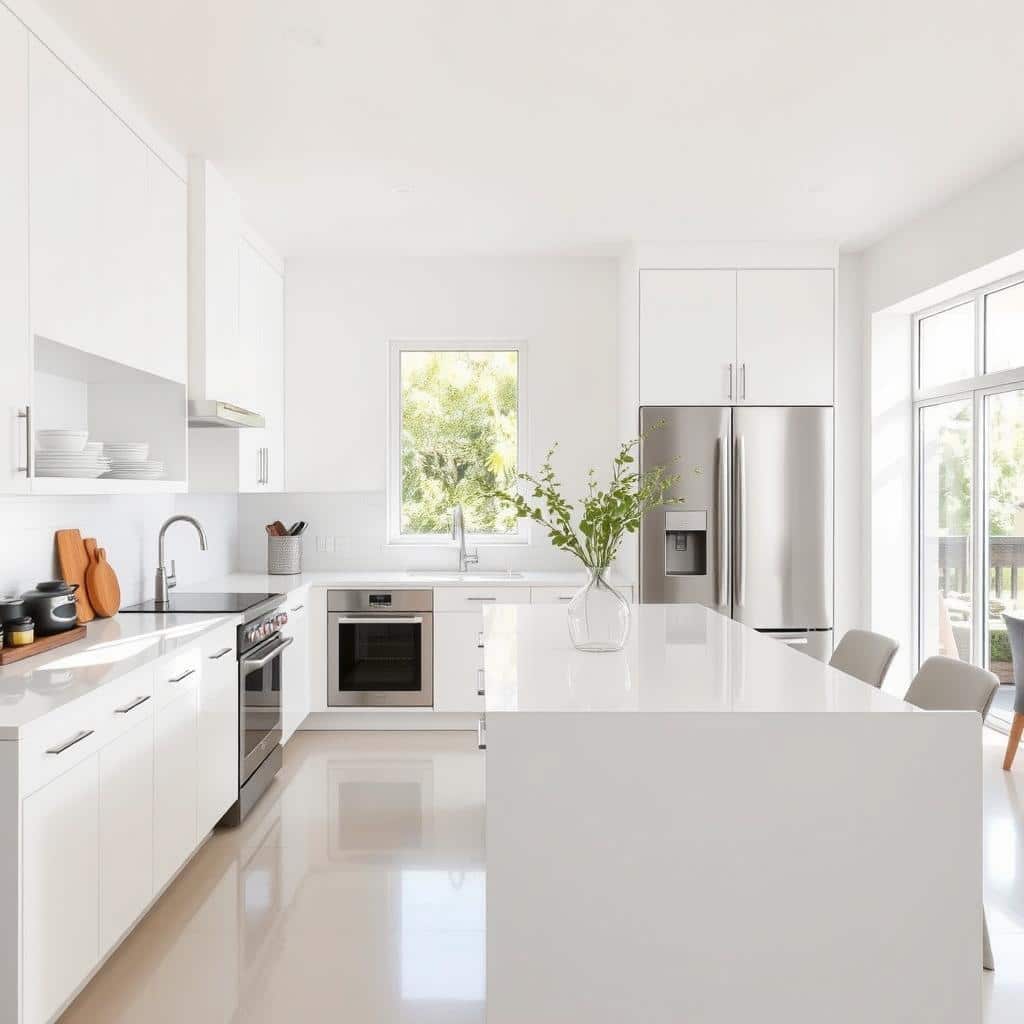
Embracing a minimalist kitchen can change your space deeply. It makes your kitchen look great and work better. You’ll have a place that’s both beautiful and useful.
The benefits of a minimalist kitchen are many. You’ll feel less stressed and more organized. Your kitchen will become a peaceful spot for meals and family time.
Starting a minimalist kitchen transformation might seem hard. But the benefits are huge. Your kitchen will show off your style and your love for simplicity. With the right help, you can make a kitchen that’s both stunning and practical.
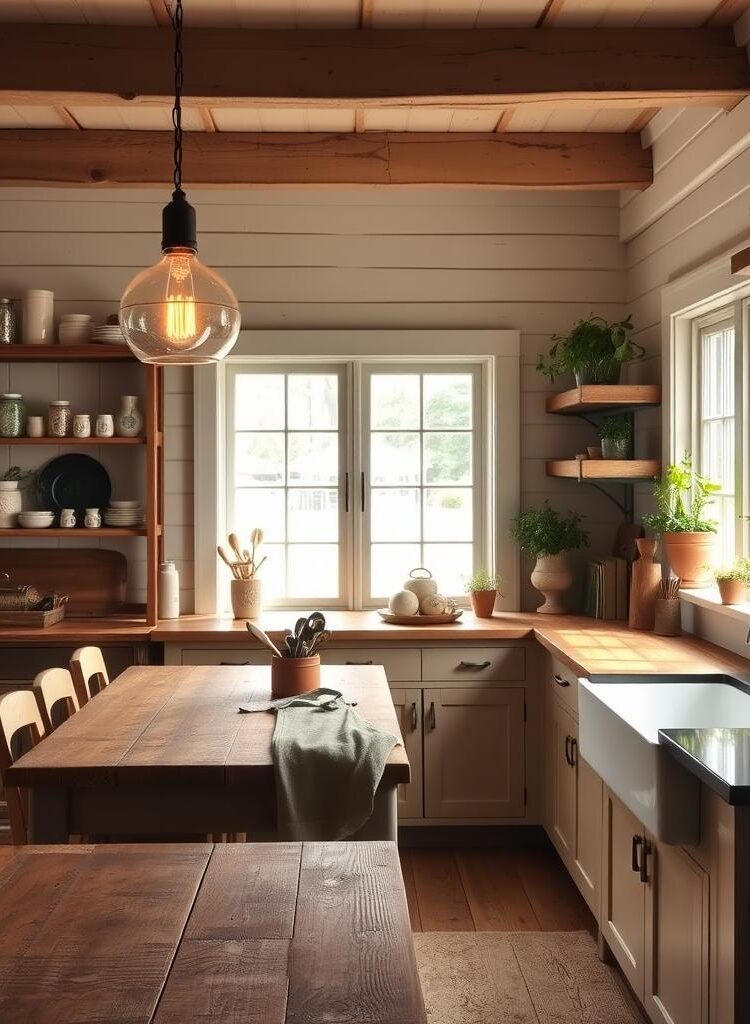

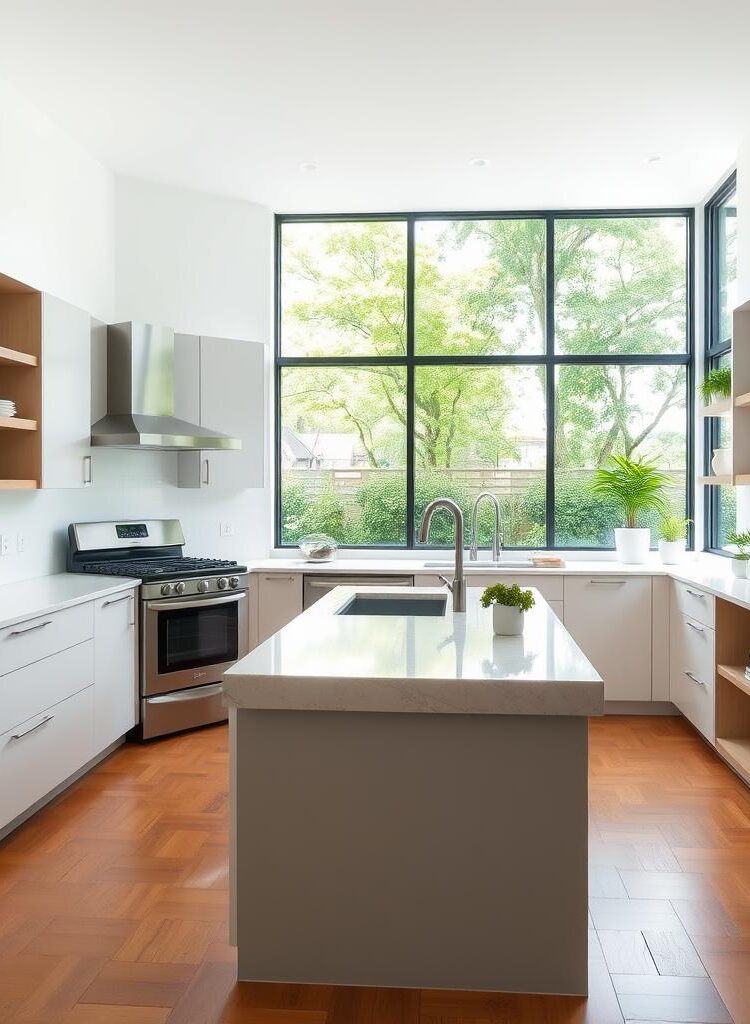

Leave a Reply